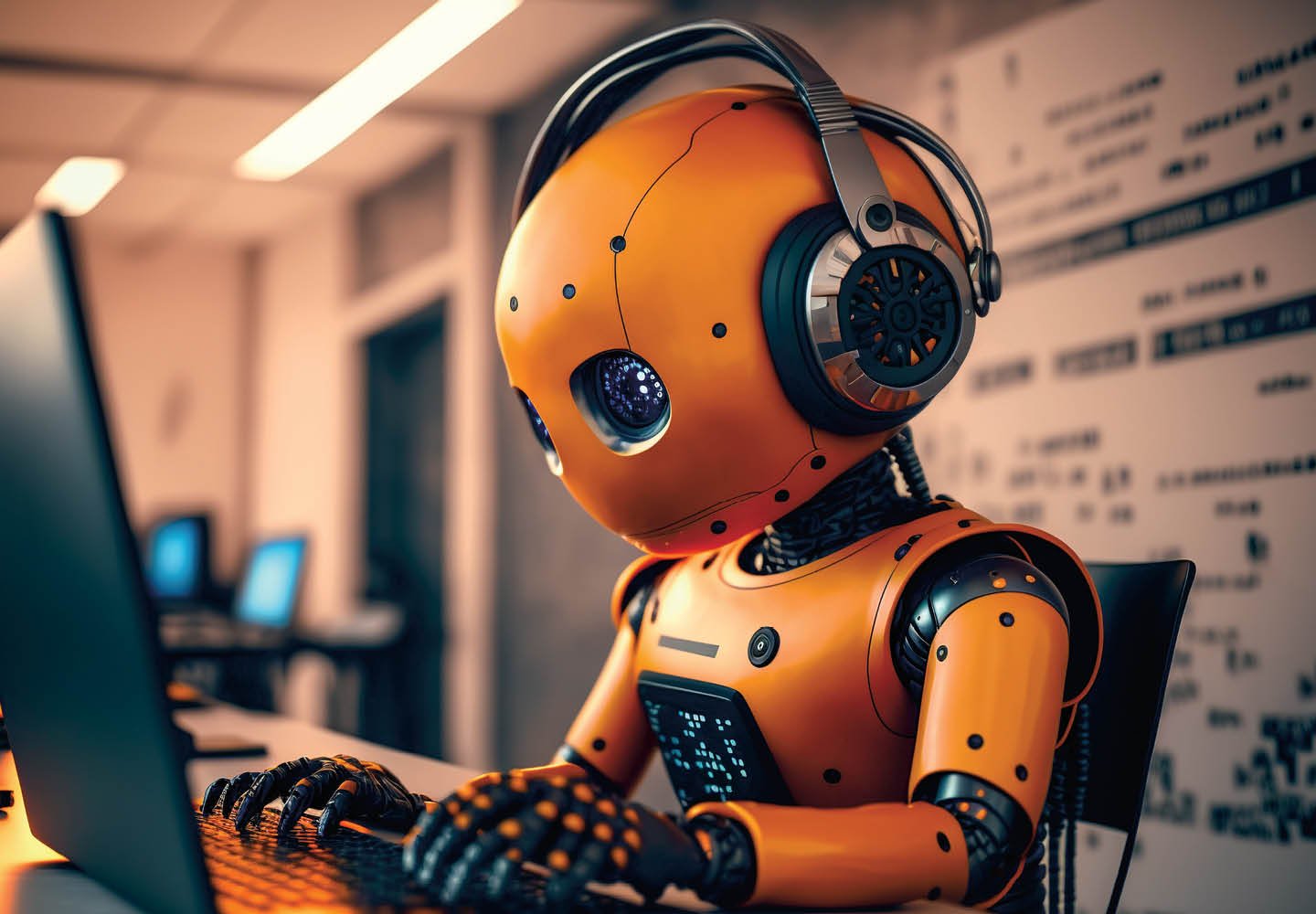Why did the turkey join a band?
He had drumsticks!
Did that joke make you cringe? Don’t blame us. ChatGPT wrote it.
Maybe you’ve heard of ChatGPT. It’s a computer chatbot that was released a year ago. Since then, it’s been wowing the world. ChatGPT can write everything from songs to computer code in seconds. It creates games, knows more than 90 foreign languages, and much more.
ChatGPT is free online. Type in any command, and you’ll get a weirdly human-like text response. The possibilities are endless—and that has some people worried. Here’s what you need to know about this powerful technology.
What Is ChatGPT?
ChatGPT is a chatbot that uses artificial intelligence, or AI. That’s a type of technology that teaches computers to do things that normally require a human’s ability to think or learn.
You probably already use AI tools like Siri and Alexa. They respond to your voice. But ChatGPT responds to typed questions or commands. It can carry on text-based conversations and provide information.
How Did It Get So Smart?
Imagine if your brain held the entire internet inside it. That’s not quite the case with ChatGPT—but almost. People at a company called OpenAI trained the bot. They used giant amounts of online text. Billions of words from books, articles, and social media posts were “fed” into ChatGPT. After analyzing them, the bot learned to see patterns. This training has helped ChatGPT figure out what a user is asking.
Then it fetches the best response from its huge data library.
Why did the turkey join a band?
He had drumsticks!
Bad joke, right? Don’t blame us. ChatGPT wrote it.
Have you heard of ChatGPT? It’s a computer chatbot. It was released a year ago. It’s been wowing the world. ChatGPT can write songs and computer code in seconds. It creates games. It knows more than 90 languages.
ChatGPT is free online. Type in any command. You’ll get a human-like text response. The possibilities are endless. And that worries some people. Here’s what you need to know about this powerful technology.
What Is ChatGPT?
ChatGPT is a chatbot. It uses artificial intelligence, or AI. That’s a type of technology. It teaches computers to do things that normally require a human’s ability to think or learn.
Do you use AI tools like Siri and Alexa? They respond to your voice. But ChatGPT responds to typed questions or commands. It can carry on text-based conversations and provide information.
How Did It Get So Smart?
Imagine you knew everything on the internet. That’s not quite the case with ChatGPT—but almost. People at a company called OpenAI trained the bot. They used online texts. Billions of words from books, articles, and social media posts were “fed” into ChatGPT. After analyzing them, the bot learned to see patterns. This helps ChatGPT figure out what a user is asking.
Then it finds the best response in its huge data library.
Why did the turkey join a band?
He had drumsticks!
Did that joke make you cringe? Don’t blame us. ChatGPT wrote it.
Maybe you’ve heard of ChatGPT, a computer chatbot that was released a year ago. Since then, ChatGPT has been wowing the world because it can write everything from songs to computer code in seconds. This chatbot also creates games, knows more than 90 foreign languages, and much more.
ChatGPT is free online. Type in any command, and you’ll get a weirdly human-like text response. The possibilities are endless—and that has some people worried. Here’s what you need to know about this powerful technology.
What Is ChatGPT?
ChatGPT is a chatbot that uses artificial intelligence (AI), a type of technology that teaches computers to do things that normally require a human’s ability to think or learn.
You probably already use AI tools like Siri and Alexa—which respond to your voice—but ChatGPT responds to typed questions or commands. It can carry on text-based conversations and provide information.
How Did It Get So Smart?
Imagine if your brain held the entire internet inside it. That’s not quite the case with ChatGPT—but almost. People at a company called OpenAI trained the bot by using enormous amounts of online text. They fed billions of words from books, articles, and social media posts into ChatGPT. After analyzing them, the bot learned to see patterns—and this training has helped ChatGPT figure out what a user is asking.
Then it fetches the best response from its huge data library.

